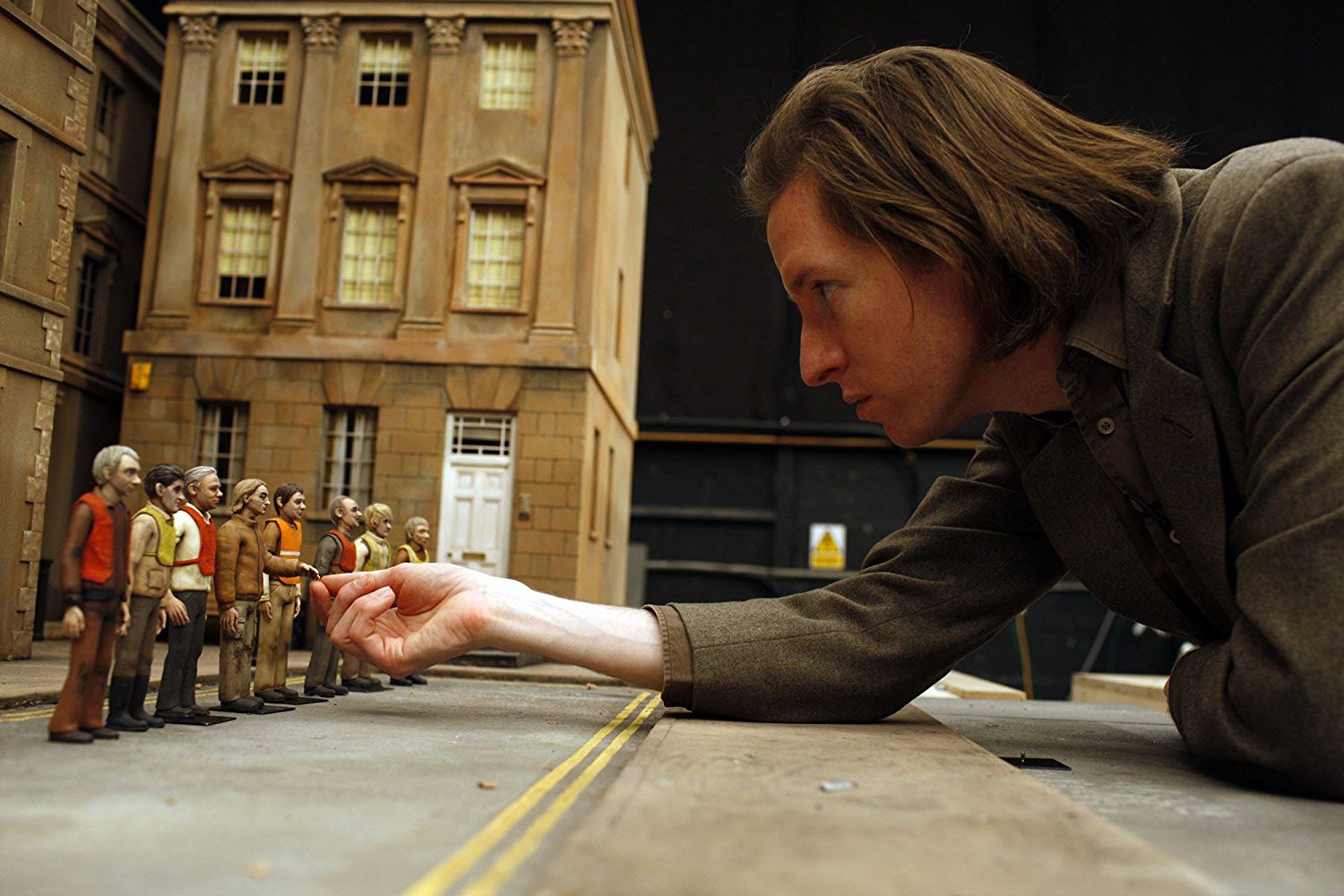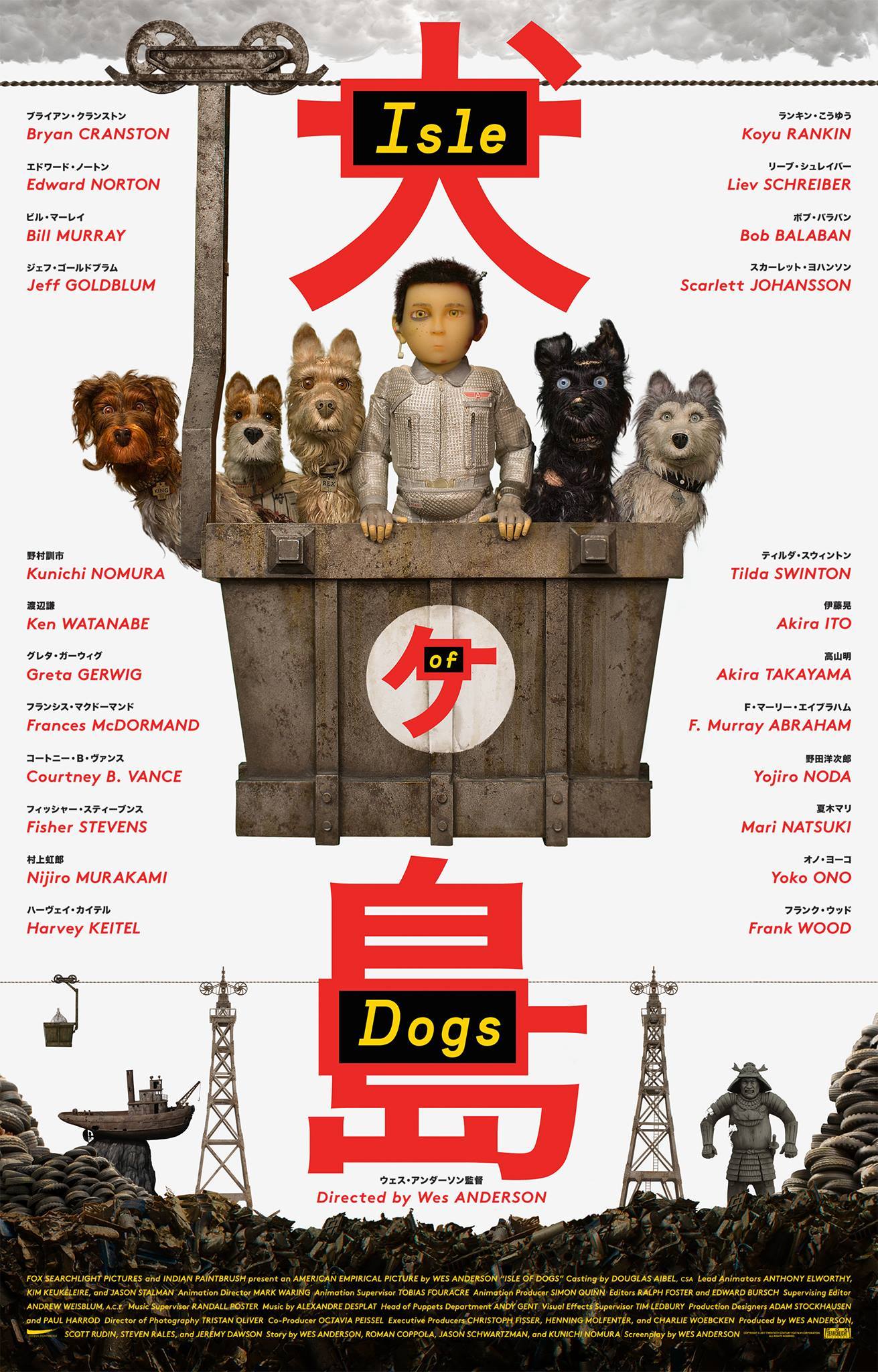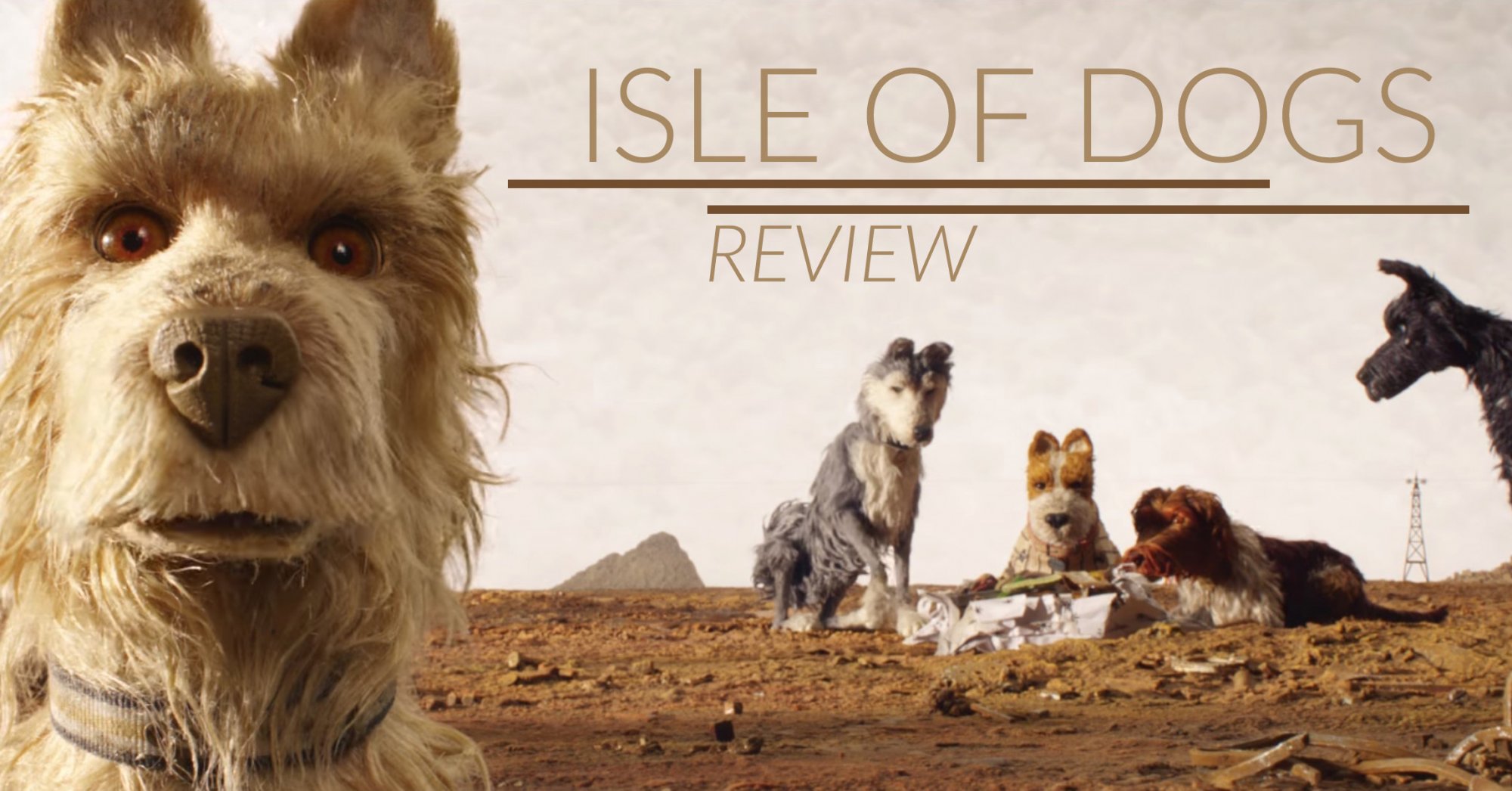Nine years after Fantastic Mr. Fox, Wes Anderson comes back to the stop-motion with Isle of Dogs, an extraordinary movie, in theatres from March.
Title
Isle of Dogs
Behind and in Front of the Camera
Wes Anderson is famous for his obsessive attention to detail, his geometrically perfect shots, the simple plots, which hide much more complex messages, and for his always amazing casts.
In Isle of Dogs we can find such a stellar vocal cast that it seems almost the “We Are the World” lineup (quoting Bill Murray, but I also thought that too, so allow me to be proud of my mind only for a sec): Bryan Cranston, Edward Norton, Bill Murray, Jeff Goldblum, Ken Watanabe, Greta Gerwig, Frances McDormand, Harvey Keitel, Liev Schreiber, Bob Balaban, Scarlett Johansson, Tilda Swinton, F. Murray Abraham, and even Yoko Ono.
Who’s Got the Typewriter
For the first time Wes Anderson has written all himself. He was only helped to collect the ideas for the plot by his loyal Jason Schwartzman, the producer Roman Coppola and by the actor Kunichi Nomura (especially for the “Japanese stuff”), who actually are accredited as co-creators of the story together with the director.
Anderson faces the big dystopian genre, honoring the big masters since the first minutes of the movie but making it magnificently his own, with well-crafted dialogues, poised and insightful, locations as minimal as complicated, and the subtext that is intertwined in a such a mature and artistic ways.

What to Know (ABSOLUTELY NO SPOILERS)
The movie is set in a Japanese city in a dystopian 2037 ruled by the Mayor Kobayashi. The Kobayashis are traditionally against dogs because of ancient fights, so the Mayor take advantage of the “canine flu” to banish them all on an island of garbage. It’s here where, some years later, we meet our heroes, a group of five dogs, tired of the outcast life and wishing to get back to their comfortable lives. This until Atari Kobayashi arrives, a young boy looking for his own dog, who wakes up their sense of loyalty and redeeming.
The plots of Anderson’s movies, especially when he works with stop-motions, are never too complex, but they always hide messages, whether social, universal or internal to the movie itself. The use of animals as main characters allows him to estrange the whole thing from the usual stories, but without losing the quality and the depth of his “flesh and blood” movies.

This thanks also to his stop-motion style, always very tangible, that doesn’t mantle the artificial character of the protagonists, but with a soul and an expressivity which goes beyond appearances in a way that we can easily get lost in his world.
Just like it already happened with Fantastic Mr. Fox, it almost make us go back to our childhood, when we believed without doubts in bedtime stories, listening to them as if they were real life stories, but living a kind of synthesis between childish sensation and mature awareness.
Another credit goes to the brilliant use of the languages within the movie. Wes Anderson also explains in a fun way, at the beginning of the movie, how characters are going to speak: using Japanese settings, he gets the dogs to talk in English, while humans speak in their native language which in the never translated (only a few times we can understand what they say through some clever escamotages). In this way the audience empathizes more with the dogs’ situation, the lead characters.

What You’ll Need
The Japanese-style action figures are irresistible, and after seeing them you are absolutely going want them. They are simply wonderful!
What They Say
During the press conference at the 2018 Berlinale, where Isle of Dogs was presented, Wes Anderson explained that “the idea wasn’t meant to be a kind of greek tragedy, we wanted to do a movie about some dogs abandoned on a garbage dump. For some years we had been talking about wanting to do something in Japan or about Japan, something related to our shared love for Japanese cinema, especially Kurosawa. So, in a way, the story could have taken place anywhere but the thing that made it come to life for us was when we decided that this should have been our fantastic version of Japan.”
On his return to stop-motion, he admitted: “The truth is that stop-motion is absolutely my favorite technique, I prefer use models rather than more sophisticated modern digital techniques, and with the stop-motion movie there’s a certain part of it that is going to be models, I mean it’s an old-fashioned technique. It’s a funny thing because usually I want to do the model in the first place, we work hard on the model, I know it’s a model, I’m doing it because it’s a model, but then, when it is included in the movie, I am always trying to convince people it’s not a model.”


One Last Thing…
Musics are done by Alexandre Desplat, who has been working with Anderson for the fourth time since Fantastic Mr. Fox and with whom he managed to win the Academy Award for Best Score with The Grand Budapest Hotel.
Talking about Isle of Dogs (“a Fantastic Mr. Fox on acids”, quoting him) the composer said that his music is an encounter between Japanese melodies and saxophones’ sounds, and this, in its simplicity, is the best definition of the Isle of Dogs’ score, that, in addition to the original one of Desplat, ranges between occidental classics and typical oriental sound.
Out of 5 Monkeys






